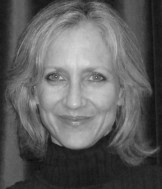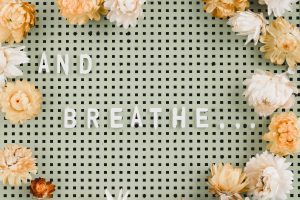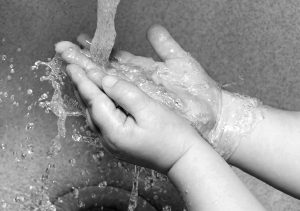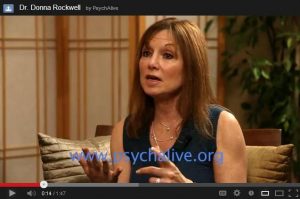Finding the Calm in the Chaos
How to use Everyday Life as a Gateway to Your Healing

There is so much talk about Mindfulness these days. It has become trendy–this ancient, over 2000 year old practice of attuning to the present moment. Trends don’t last but real wisdom can seep into our everyday lives and become, as Jon Kabat-Zinn says, “A way of being.” It is like the difference between two motivations for going on a diet: making a real lifestyle change that is fueled by love of yourself versus one that is based on rejection and fear of who you have become.
What is Mindfulness?
Simply, it is the non-judgmental awareness of the present moment.
Sounds pretty basic right? But how, in the middle of strong emotion or circumstances that seem unjust, relationship struggles, physical disease, pain, both emotional and within our bodies, can we develop Mindfulness?
Let’s break it down.
Non-judgmental: we are judging all the time. This is intelligent; a way of discerning what is good or bad, assessing situations and people to assure our safety. Mindfulness is not an attempt to get rid of any parts of ourselves but to find our choice versus reaction to emotional content, people, circumstances, etc.
To begin to practice non-judgment, watch your typical reaction to less intense situations. It could be as simple as you are late for an appointment, racing around, and spill your coffee in a mad dash for the door, staining some paperwork you need for an upcoming meeting. UGH! The tendency here might be to berate yourself, “You idiot, now look what you’ve done”, or some similar self-talk with a harsh quality. The challenge is to begin to practice right there in the middle of the chaos. It might go like this: you begin to notice your self attack, “I hear myself;” already there is a witness. If there is a part of you who is witnessing, then there is more to you than this experience.
Through practice, overtime you cultivate more identity with what I call, the essence of your being, (learning how to separate Awareness and Mental Activity), and you can learn not to get swept away by the waves of immediate experience. For now, the beginning practice, is to simply note I am aware of my negative self-talk. Non-judgmental attention loosens your grip on holding tightly to your evaluation of the moment. Non-judgment allows what is, to simply be as it is. It is coffee, the heat, the color, the papers wet and stained, and you rushing, heart beating fast, thoughts, feelings, sensations. By attacking, we don’t improve the situation, but only add fuel to the fire, or pile more suffering onto an already difficult situation. How would you support someone you love in a similar circumstance? Extend your own heart to yourself; this is the beginning of practicing self-kindness.
Here is one key to a non-judgmental state: Try on the attitude of Curiosity. There is an open quality to curiosity versus the shutting down of judgment.
In examining this first element of Mindfulness, non-judgment, we are not attempting to shut ourselves down and suddenly become light and bright spirits that think only good thoughts. We are attempting to become conscious of our reflexive tendencies, so that we might then be able to choose to set down any fixed ideas that imprison us and create additional suffering. We are cultivating openness.
Notice I keep using the word Practiceor cultivate. We have spent a long time practicing the way we think and approach our lives. It takes time and commitment to try on new ways of being. This is not a quick fix, which is what trends are made of, quick fixes that do not last. Mindfulness has stood the test of time and recently has been validated in scientific research as a way to create lasting positive changes.
Step 1: Practice becoming aware of your internal dialogue, notice what you accept and reject in yourself. When you are able to become conscious of self-judgment, see if you can apply the quality of curiosity. Curiosity is being interested, like you are studying something never seen before and beginning to describe your experience, not explain (this is not about analysis), by looking at yourself and the situation with a kind eye. What might be the opposite of your self attack, how might it sound, what action might you take? Experiment in each moment. Don’t wait for the perfect moment to sit in silence and meditate upon a mountaintop. Integrate Mindfulness within your day, and you might begin to discover the possibility in the pain or sense, where calm exists right there in the chaos.
I will continue further into the other elements of Mindfulness: Awareness and Present Moment, with tips on practice in my next blog.
 Diane Renz, a licensed psychotherapist, founder of Your Gateway to Healing, writer, workshop facilitator, utilizes both her academic background and personal experiences to explore how pain can become our possibility. She currently studies with Dr. Dan Siegel integrating the latest scientific understandings on neuroscience and Mindfulness within her work. For more information feel free to visit www.yourgatewaytohealing.com.
Diane Renz, a licensed psychotherapist, founder of Your Gateway to Healing, writer, workshop facilitator, utilizes both her academic background and personal experiences to explore how pain can become our possibility. She currently studies with Dr. Dan Siegel integrating the latest scientific understandings on neuroscience and Mindfulness within her work. For more information feel free to visit www.yourgatewaytohealing.com.
© 2011 Your Gateway to Healing™, Diane Renz, LPC.
To read more from this author, visit her bio page.
Tags: lifetime healing, mindfulness, personal growth, self-awareness, stress management








Thank you for your insights. I love reminders of the importance of non-judgmental awareness. I believe it is the key to emotional stability. As Fritz Pearls used to say, “awareness itself is curative”. So, anytime we can raise our awareness, it can prove to be beneficial.